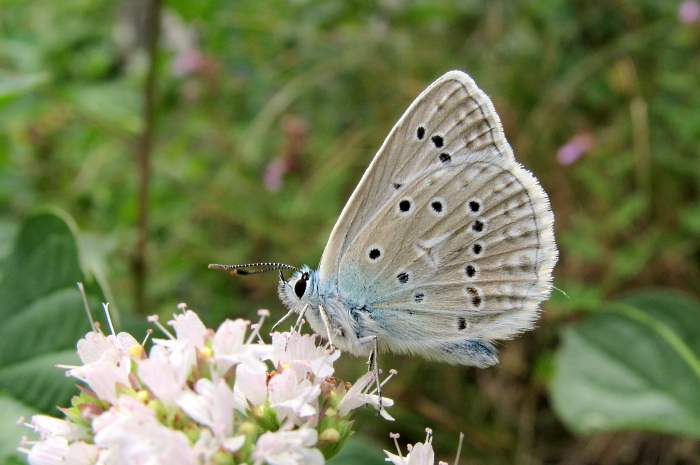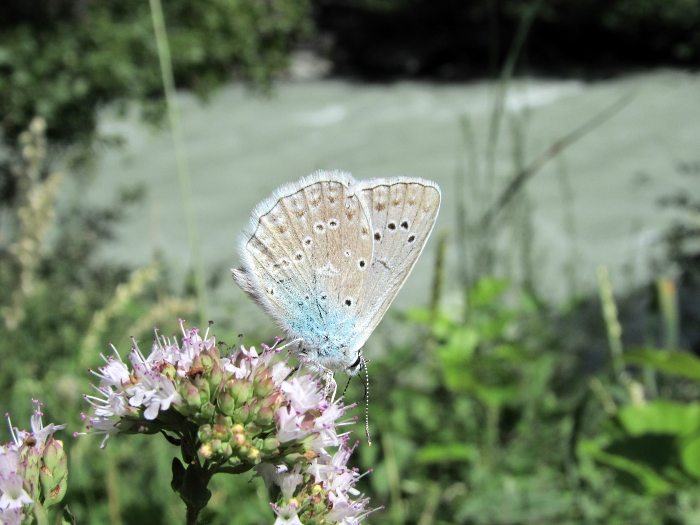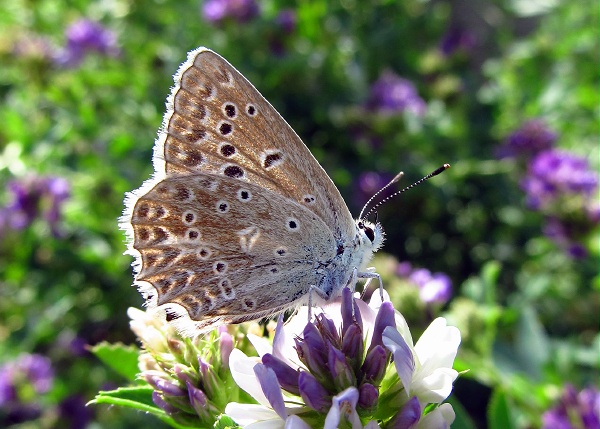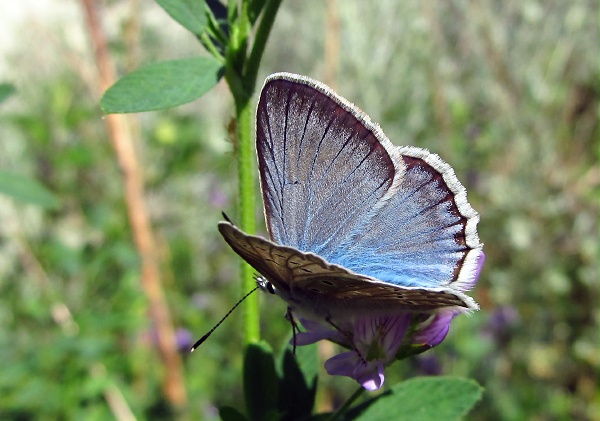
Female, Switzerland, July 2015

Male, Switzerland, July 2015

Male, centre, with common blues

Male, Switzerland, July 2007

Female on the foodplant, Switzerland, July 2005

The same female, Switzerland, July 2005

Female, Switzerland, July 2011, form steeveni

Male, Switzerland, July 2011

Male, Switzerland, July 2015

Male, Switzerland, July 2009

Female, Switzerland, July 2011

Male, Switzerland, July 2009

Pair mating, Switzerland, July 2007

Female, July 2009, Switzerland

Pair mating, Switzerland, July 2007

Male, Switzerland, July 2006

Distribution
This very distinctive blue
has a more
patchy distribution than the above map might suggest. In its western
range - in Spain, in particular - it is very local and generally
uncommon, and in Switzerland, where I see it, it is largely restricted
to hot places in the Rhône Valley and is rarely numerous. It is said to
be
commoner in its south-eastern range but recent maps show local
extinctions in many areas, especially in eastern central Europe.
Both sexes are characterised
by the
scalloped outer margin of the hindwing, though this is much more
obvious in the female. The male is bright blue above with thick, dark
borders which leak in along the veins and a dark line at the end of the
discoidal cell of the forewing. The female is brown, with varying
amounts of blue at the base of the wings. Individuals with no blue are
called form steveni.
This is
relatively common in Switzerland, where it is normal for the blue to be
very limited. Beneath, the male is greyish, with grey rather than black
submarginal markings (resembling watermarks) and lacking any orange.
Females are similarly marked but the underside is typically a warmer
brown and the submarginal markings form very obvious arches inside the
scalloped margin.
The foodplant is crown vetch.
Eggs are
laid on the leaves rather than the flowers, often in the shade of rocks
or bushes. One of my regular spots for this species is a track along a
rather steep slope through vineyards, where the stepped vine terraces
provide the necessary shade. The butterfly flies from the end of June -
more typically July in Switzerland - through to August. It hibernates
as an egg or a small caterpillar.


















